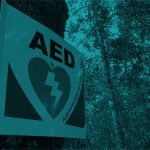
Shock advice algorithm plays a vital role in the detection of sudden cardiac arrests on electrocardiogram signals and hence, brings about survival improvement by delivering prompt defibrillation. The last decade has witnessed a surge of research efforts in racing for efficient shock advice algorithms, in this context. On one hand, it has been reported that the classification performance of traditional threshold-based methods has not complied with the American Heart Association recommendations. On the other hand, the rise of machine learning and deep learning-based counterparts is paving the new ways for the development of intelligent shock advice algorithms.
In this paper, we firstly provide a comprehensive survey on the development of shock advice algorithms for rhythm analysis in automated external defibrillators. Shock advice algorithms are categorized into three groups based on the classification methods in which the detection performance is significantly improved by the use of machine learning and/or deep learning techniques instead of threshold-based approaches. Indeed, in threshold-based shock advice algorithms, a parameter is calculated as a threshold to distinguish shockable rhythms from non-shockable ones. In contrast, machine learning-based methods combine multiple parameters of conventional threshold-based approaches as a set of features to recognize sudden cardiac arrest.
Noticeably, those features are possibly extracted from stand-alone ECGs, alternative signals using various decomposition techniques, or fully augmented ECG segments. Moreover, these signals can be also used directly as the input channels of deep learning-based shock advice algorithm designs. Then, we propose an advanced shock advice algorithm using a support vector machine classifier and a feature set extracted from a fully augmented ECG segment with its shockable and non-shockable signals. The relatively high detection performance of the proposed shock advice algorithm implies a potential application for the automated external defibrillator in the practical clinic environment. Finally, we outline several interesting yet challenging research problems for further investigation.






